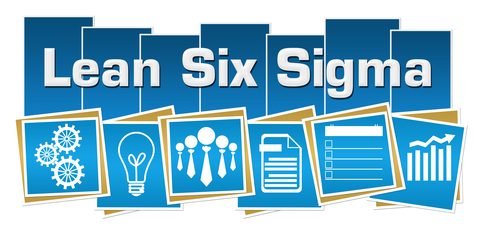
As mentioned in the previous section, the parallel application of the 2 Lean and 6 Sigma improvement tools without any problems because of their different approaches and areas of improvement. Therefore, efforts to integrate these two types of tools to achieve greater efficiency became the goal of many manufacturers in the last century. Until the 1990s, a selective integrated management model between lean manufacturing (Lean) and 6 Sigma was born.
It is seen as a new trend in selecting effective methods and tools to best promote the internal capabilities of the organization to simultaneously meet all three important requirements for customers. Product: competitive price, good quality and punctual delivery. LSS model has been successfully applied in multinational corporations such as GE, Xerox, Boeing, Samsung, LG, etc. It can be said that LSS is a flexible and comprehensive method to achieve and maintain sustainable success in business.
Lean Six Sigma is implemented according to the DMAIC approach including 5 stages in sequence: Define (Determine), Measure (Measure), Analysis (Analysis), Improve (Improve) and finally Control ( Control). Each phase identifies the specific activities that the project team must carry out with an appropriate set of tools. The DMAIC process is at the heart of Six Sigma process improvement projects. The following steps introduce the problem-solving process in which specialized tools are used to convert a real problem into a statistical form, build a solution on a statistical model, and then move on. Convert it to a practical solution.
The highlight of the 6 Sigma model is the use of statistical techniques to control production or service delivery. The processes are designed to achieve a defined transformation through statistical techniques, analyze the factors that cause errors and find ways to adjust them to achieve the defined goals. Lean, meanwhile, can help businesses create products with the least cost, deliver goods in the fastest time, which will help businesses increase their competitiveness and increase profits. However, product quality has always been considered the top priority of the business. Therefore, manufacturers need to combine with the 6 Sigma model which can help provide enterprises with a strict process control method, thus stabilizing and reducing the quality change of products/services.
When integrating lean – 6 Sigma (LSS), the philosophy of lean and 6 Sigma, the methods and processes are combined to support each other to become LSS. LSS’s implementation framework is 6 Sigma, but the lean approach is used specifically in setting goals and improvement project implementation methods; Lean PDCA and DMAIC of 6 Sigma can be used in a flexible combination. In general, if your business is aiming for a comprehensive improvement model, then Lean – 6 Sigma is the answer you are looking for.
Productivity and Quality Office